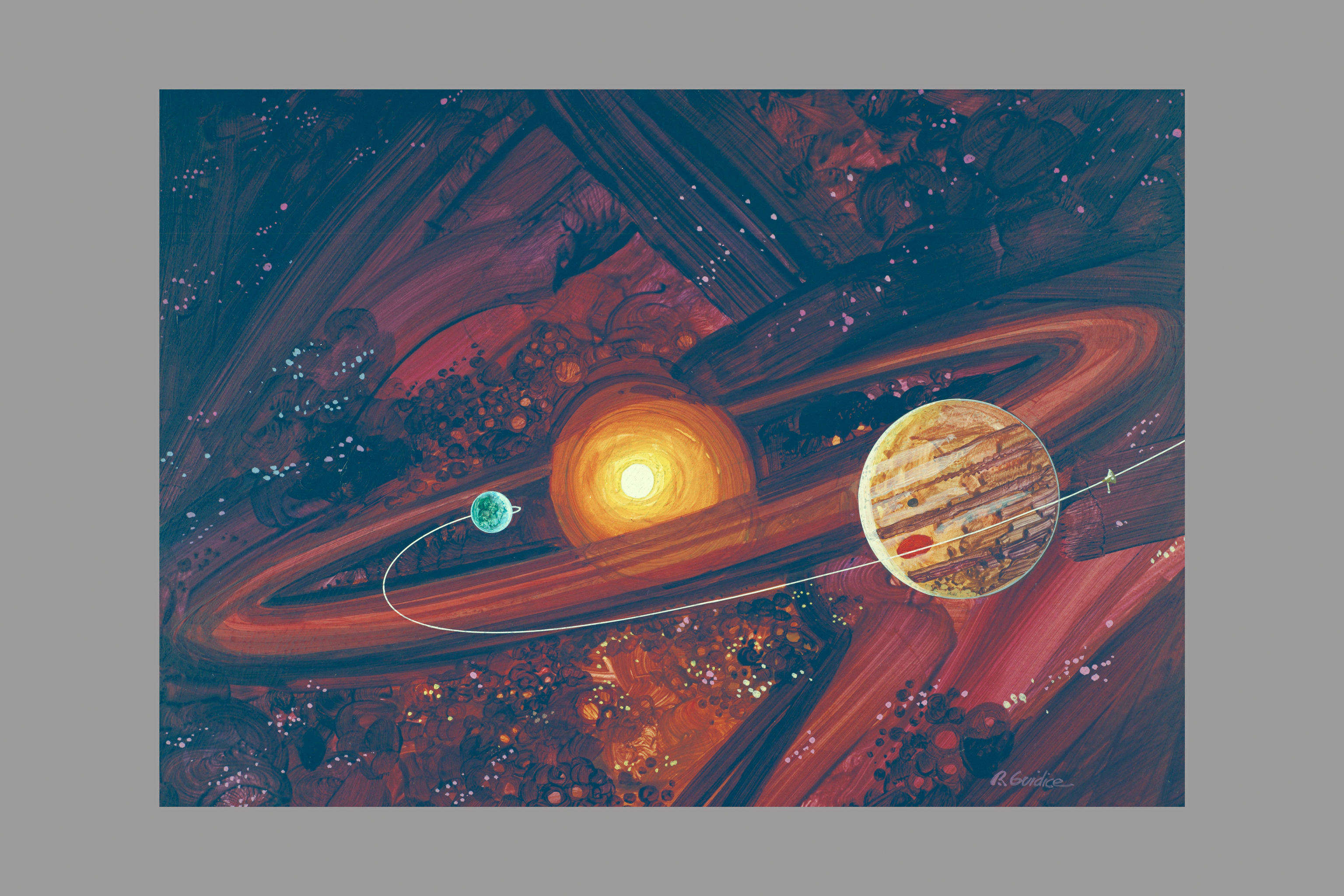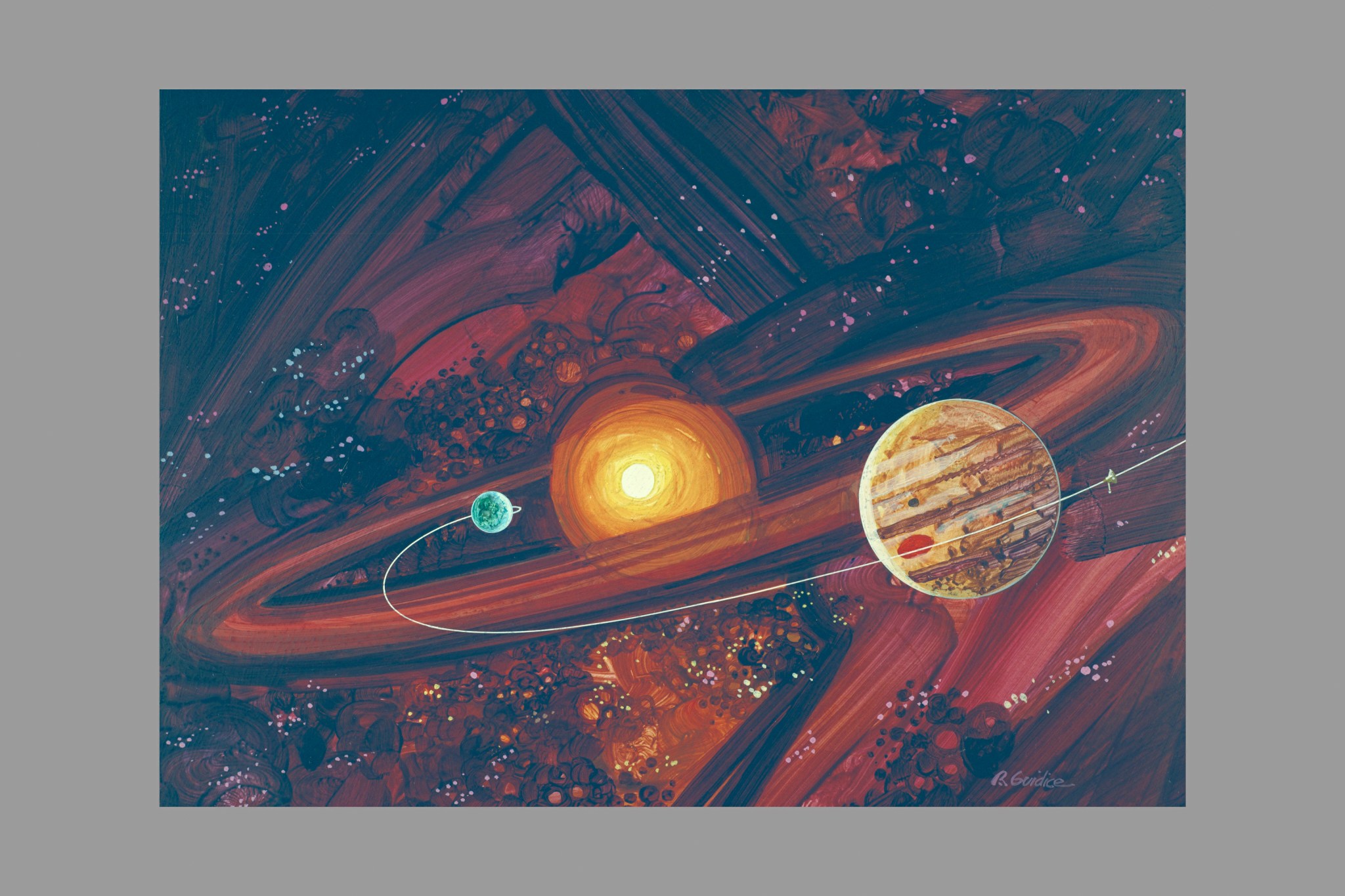Pioneer 10 Crosses the Asteroid Belt
This illustration made on Nov. 26, 1974, by Rick Giudice shows the Pioneer 10 spacecraft traveling through the asteroid belt between Mars and Jupiter, the largest planet in the solar system. At the time, it was uncertain whether it would traverse it safely since the density of particles large enough to damage the craft was […]


This illustration made on Nov. 26, 1974, by Rick Giudice shows the Pioneer 10 spacecraft traveling through the asteroid belt between Mars and Jupiter, the largest planet in the solar system. At the time, it was uncertain whether it would traverse it safely since the density of particles large enough to damage the craft was not yet known, but Pioneer 10 became the first satellite to enter and pass through the asteroid belt.
The mission’s primary goal was to explore Jupiter, its satellites, its magnetic field, and trapped radiation belts. On Nov. 6, 1973, while still 16 million miles from Jupiter, Pioneer 10 began to image the giant planet with its photopolarimeter, and shortly thereafter began to take measurements with its other instruments as well. Twenty days later, the spacecraft passed the front of Jupiter’s bowshock, where the solar wind clashed with the planet’s magnetosphere. By Dec. 1, the spacecraft was returning images of the planet exceeding the best pictures from Earth. Pioneer 10 sent its last signal on Jan. 23, 2003, when it was 7.6 billion miles (12.23 billion kilometers) away from Earth.
Learn about Pioneer and other planetary exploration and scientific satellite research planned for the 1970s in the Seeds of Discovery documentary on NASA+.
Image Credit: NASA
What's Your Reaction?









































